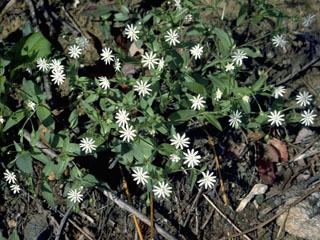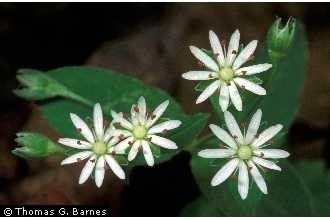Rank Species | Genus Stellaria Higher classification Stitchwort | |
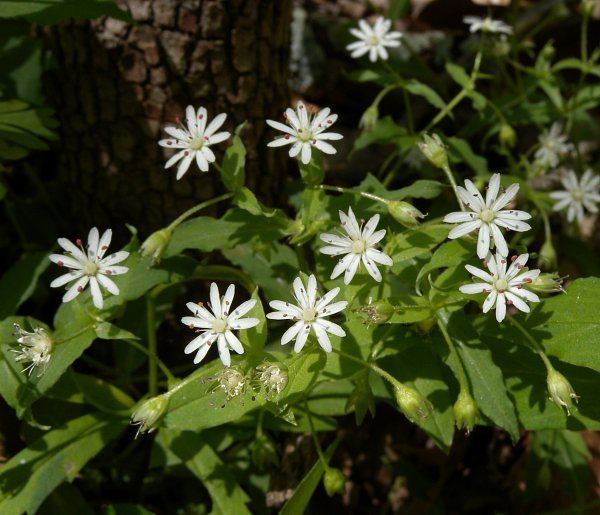 | ||
Similar Stitchwort, Caryophyllaceae, Cardamine concatenata, Silene virginica, Micranthes virginiensis | ||
Stellaria pubera, commonly called the star chickweed, is a spring wildflower native to the eastern United States.
Contents
Habitat and Range
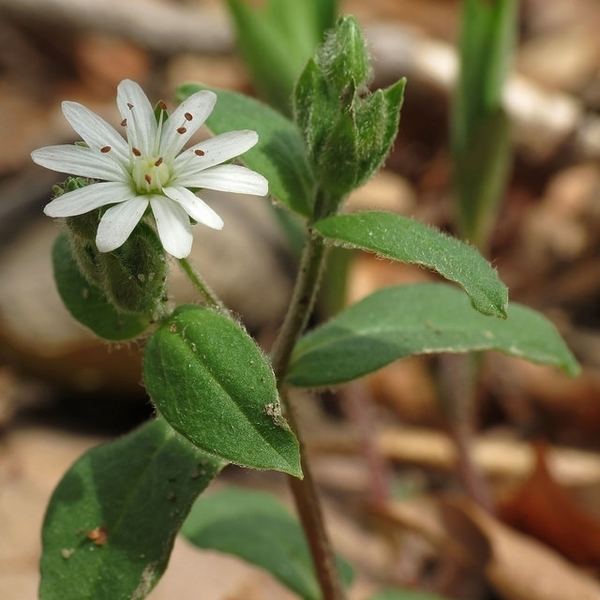
Stellaria pubera is widespread and common. Its natural habitat is bottomland forests and mesic forests, where it is often found on rocky slopes. It is found chiefly from Pennsylvania south to Georgia and west to Indiana and Alabama, with scattered populations in New York, New England, Illinois, Nebraska, Mississippi and Louisiana.
Description
An early spring bloomer, star chickweed may be seen in flower as early as April.
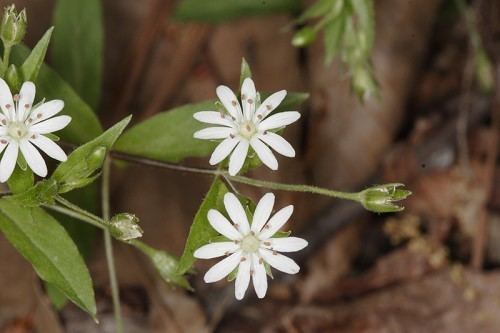
It grows 6 inches (15 cm) to 12 inches (30 cm) high. The leaves are ovate, growing opposite one another and usually attached without stalks to the weak and sometimes reclining stem. Close examination of the flower reveals that what appears to be ten petals are actually five, each deeply cleft. The blossom as a result looks star-like, with its white, pointed petal segments surrounding an off-white center. Stamens are tipped with dark anthers. The stem has rows of small soft hairs that switch sides at each node.
It is similar to Stellaria corei, with which it can easily be confused.
Etymology
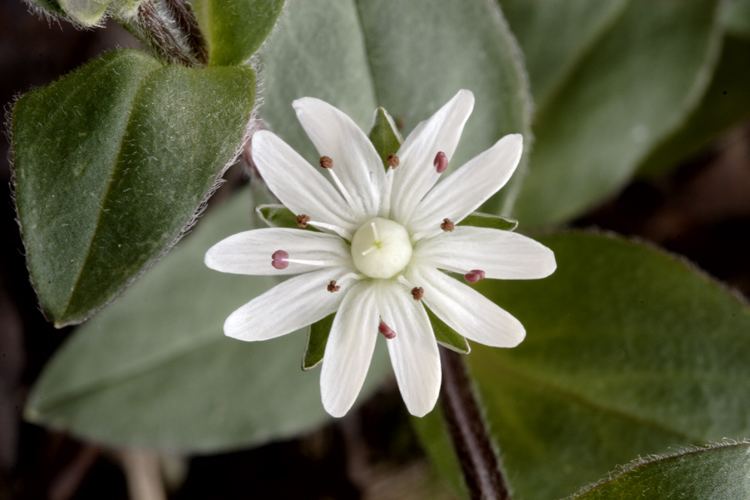
The star-shaped flowers of star chickweed inspired the common and Latin name for this flower. The genus name, Stellaria, comes from the Latin stella, meaning "star". The species name, pubera ("hairy"), comes from the lines of hairs that line the stem.
Conservation
Star chickweed is endangered in the state of New Jersey.
